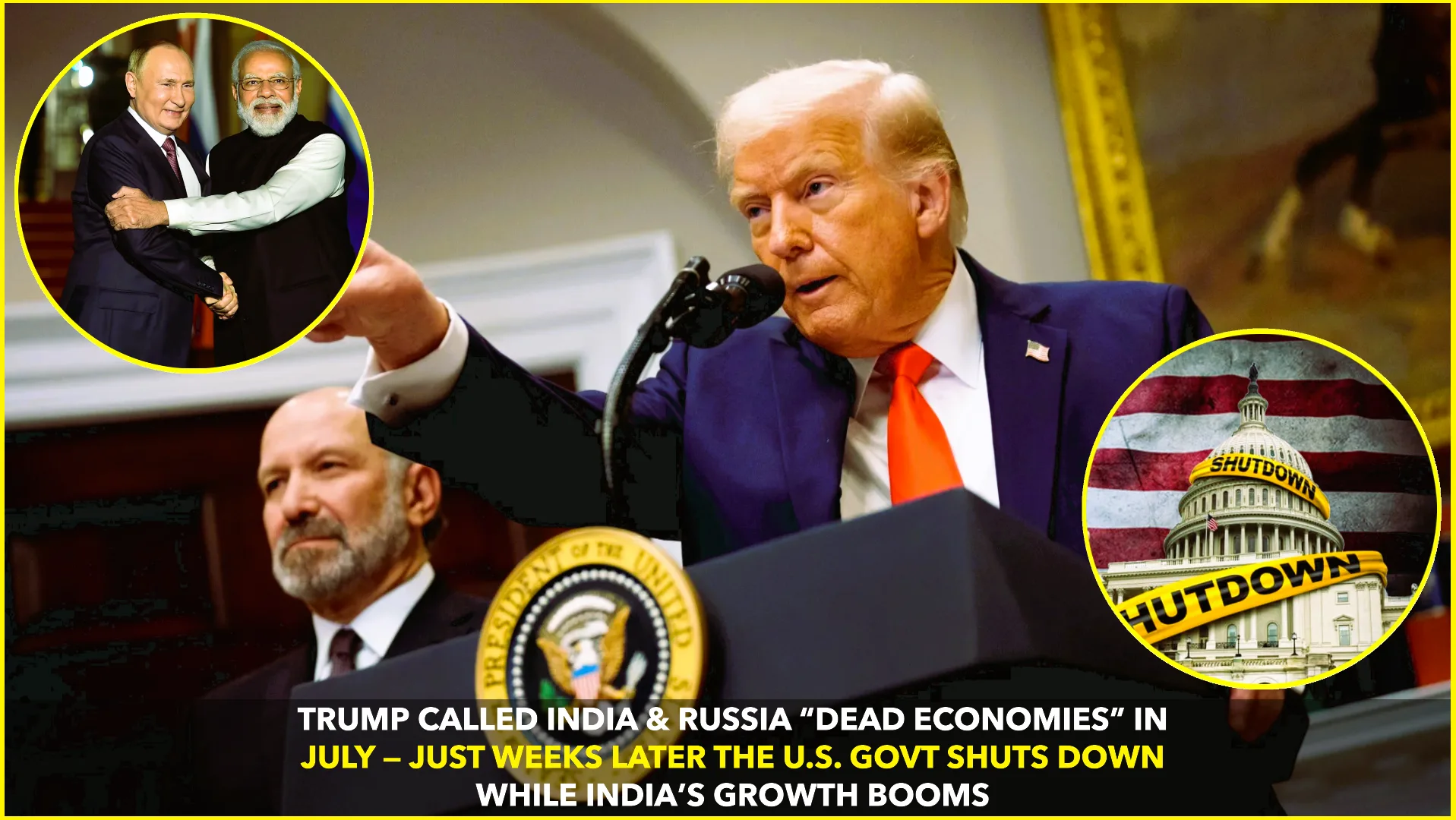In July 2025, former U.S. President Donald Trump took a harsh stance against India and Russia, calling them “dead economies” in a Truth Social post. The comment came as he announced a 25% tariff on Indian goods, citing India’s trade ties with Russia and what he described as “unfair tariffs” on U.S. products (The Guardian, July 30, 2025).
Trump’s post, “India-Russia can take their dead economies down together,” immediately drew international backlash, especially from Indian economists and business leaders who pointed to India’s strong post-pandemic rebound and growing global trade influence (Times of India, July 31, 2025).
But only two months later, Trump’s words seem to have backfired spectacularly.
The U.S. Faces a Fiscal Crisis
By early October 2025, the U.S. government entered a full shutdown after Congress failed to pass a new spending bill. Nearly 750,000 federal employees were furloughed, and key government services were suspended, from parks to federal loan processing (Reuters, October 2, 2025).
According to estimates by Oxford Economics, every week of the shutdown could shave 0.1 to 0.2 percentage points off U.S. GDP, potentially costing billions if prolonged (The Guardian, October 2, 2025). Treasury Secretary Scott Bessent warned that the crisis was “a hit to working America” and would likely slow the country’s fragile recovery from inflation and debt shocks (Business Insider, October 2, 2025).
Ironically, the shutdown Trump once blamed on “weak leadership” is now unfolding under a Republican-led Congress — raising questions about the U.S. government’s fiscal discipline and stability.
Meanwhile, India Defies the “Dead Economy” Tag
While the U.S. grapples with political paralysis, India’s economic momentum tells a very different story. According to government data, India recorded 7.8% GDP growth in the first quarter of FY 2025–26, maintaining its position as the world’s fastest-growing major economy (South China Morning Post, September 15, 2025).
Despite global headwinds, India’s industrial output, consumer demand, and exports have remained strong — buoyed by reforms in manufacturing and renewable energy. Analysts at Nomura and IMF project India’s growth to stay above 6% through 2025, while the U.S. is expected to slow to just 2% (Economic Times, August 2, 2025).
Even Indian ministers joined the debate. Piyush Goyal, Minister of Commerce and Industry, shared IMF data on X (formerly Twitter) comparing the two nations’ growth rates, captioning it: “Who’s the dead economy now?”
Economic Reality vs. Political Rhetoric
Trump’s statement seemed politically charged, aimed at energizing domestic voters ahead of the 2026 midterms. However, the reality of global economics has a way of humbling populist predictions.
India’s sustained growth is built on a young workforce, digital infrastructure, FDI inflows, and policy stability — while the U.S. faces mounting debt, partisan gridlock, and a rising fiscal deficit projected to hit $2.2 trillion this year.
The irony deepens when one considers that Trump’s tariffs on Indian goods — meant to pressure New Delhi — have barely dented its economy, while the U.S. shutdown is costing American taxpayers billions each week.
The Global View
International analysts are now calling the episode a case of “economic irony.” A Bloomberg editorial noted that India’s economy “continues to outperform expectations while Washington struggles to pay its bills,” marking a sharp reversal of typical narratives.
Diplomatically, the contrast may also reshape global perceptions: as India strengthens trade partnerships across Asia, Africa, and Europe, the U.S. faces questions about its fiscal credibility.
In short, Trump’s July prediction didn’t just age poorly — it has become a symbol of how quickly global economics can turn the tables. Two months later, the so-called “dead economy” is alive and thriving, while the superpower stumbles over its own finances.










